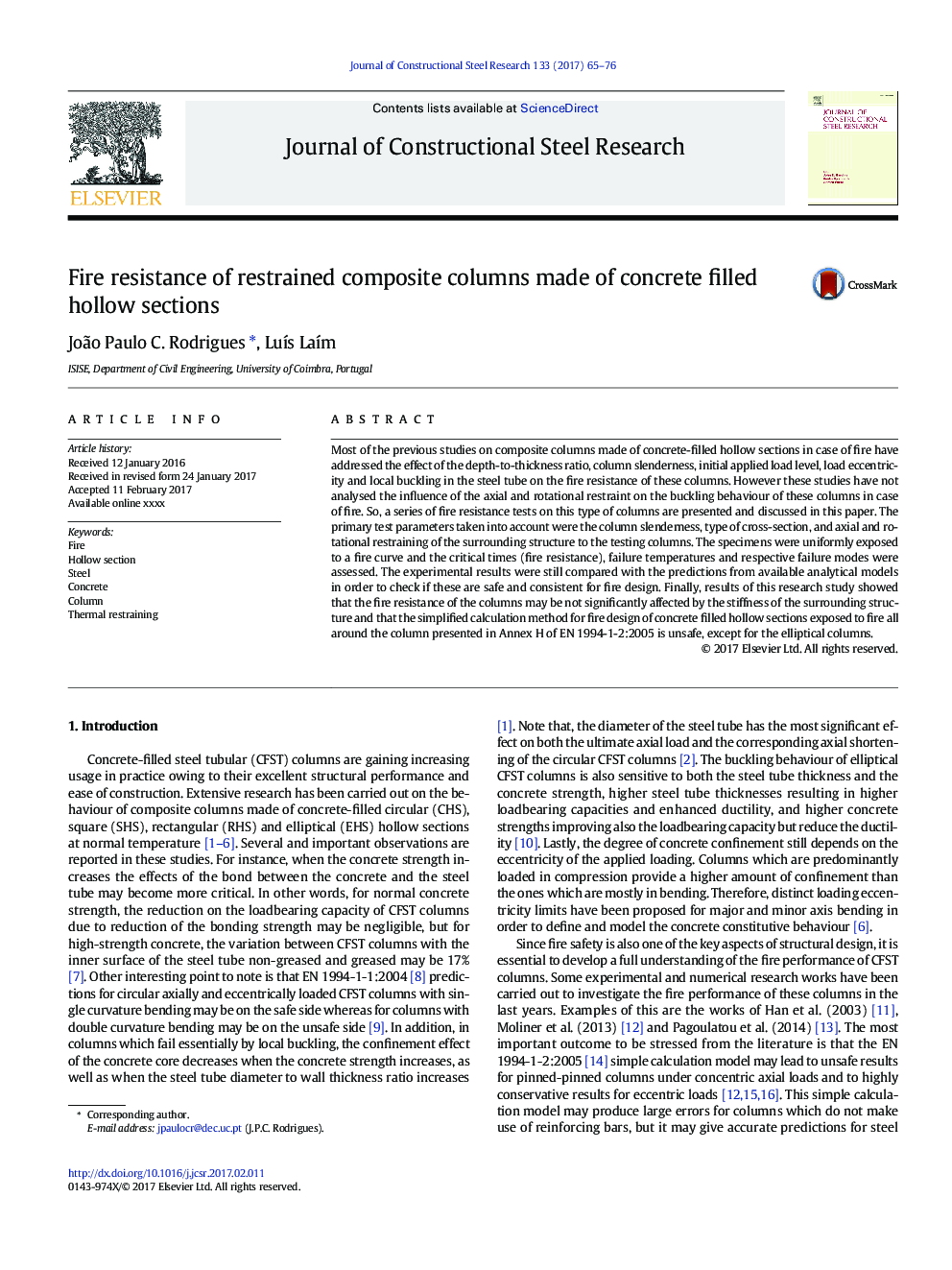| Article ID | Journal | Published Year | Pages | File Type |
|---|---|---|---|---|
| 4923462 | Journal of Constructional Steel Research | 2017 | 12 Pages |
Abstract
Most of the previous studies on composite columns made of concrete-filled hollow sections in case of fire have addressed the effect of the depth-to-thickness ratio, column slenderness, initial applied load level, load eccentricity and local buckling in the steel tube on the fire resistance of these columns. However these studies have not analysed the influence of the axial and rotational restraint on the buckling behaviour of these columns in case of fire. So, a series of fire resistance tests on this type of columns are presented and discussed in this paper. The primary test parameters taken into account were the column slenderness, type of cross-section, and axial and rotational restraining of the surrounding structure to the testing columns. The specimens were uniformly exposed to a fire curve and the critical times (fire resistance), failure temperatures and respective failure modes were assessed. The experimental results were still compared with the predictions from available analytical models in order to check if these are safe and consistent for fire design. Finally, results of this research study showed that the fire resistance of the columns may be not significantly affected by the stiffness of the surrounding structure and that the simplified calculation method for fire design of concrete filled hollow sections exposed to fire all around the column presented in Annex H of EN 1994-1-2:2005 is unsafe, except for the elliptical columns.
Related Topics
Physical Sciences and Engineering
Engineering
Civil and Structural Engineering
Authors
João Paulo C. Rodrigues, LuÃs LaÃm,
